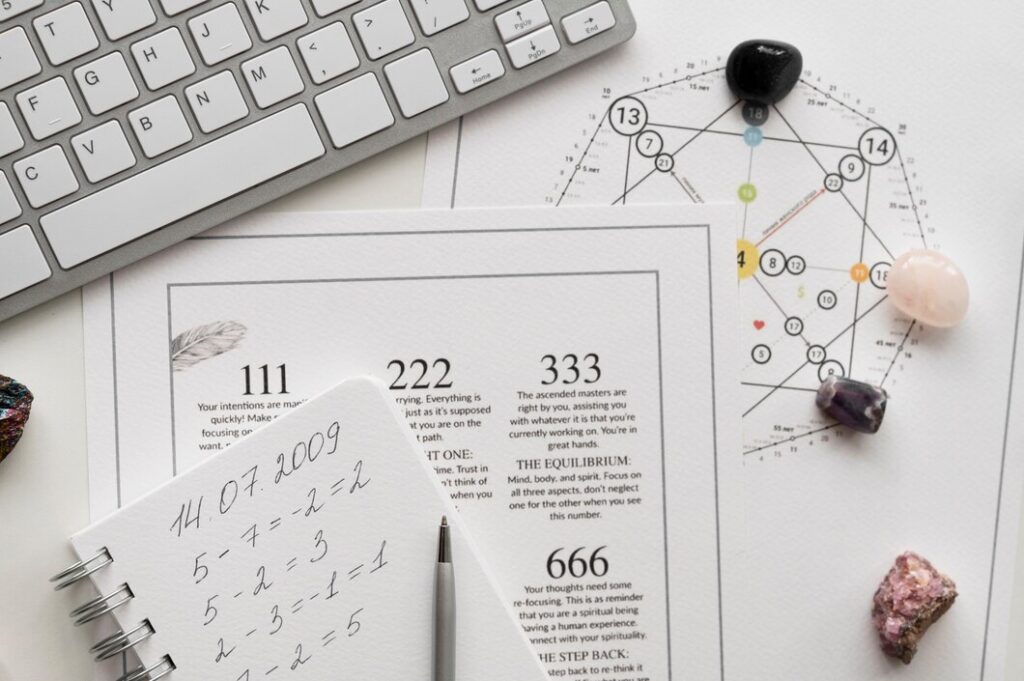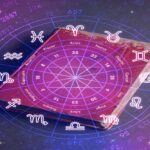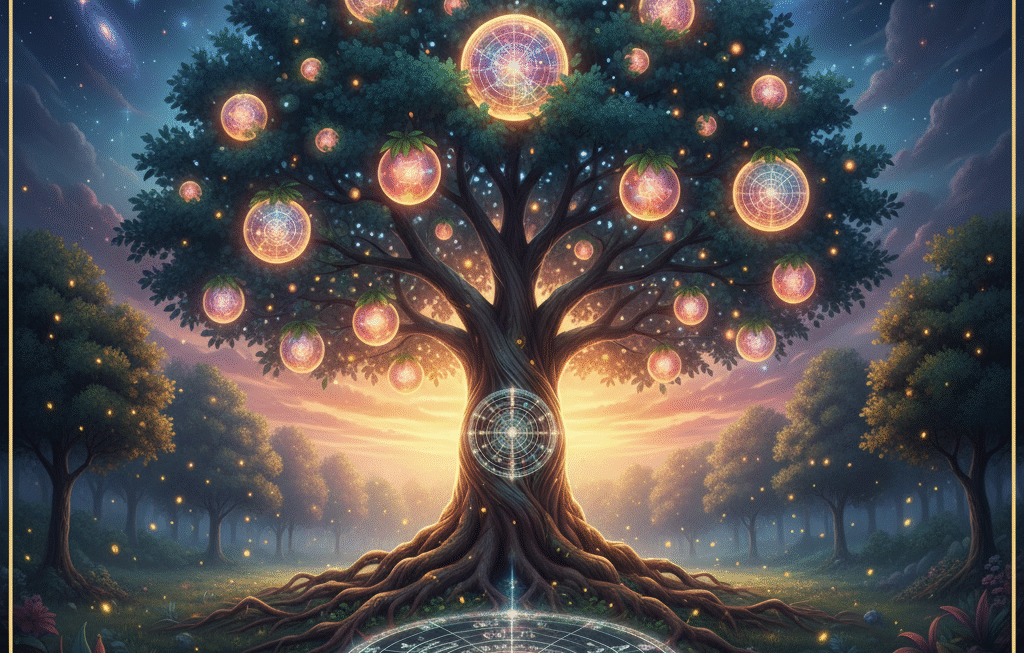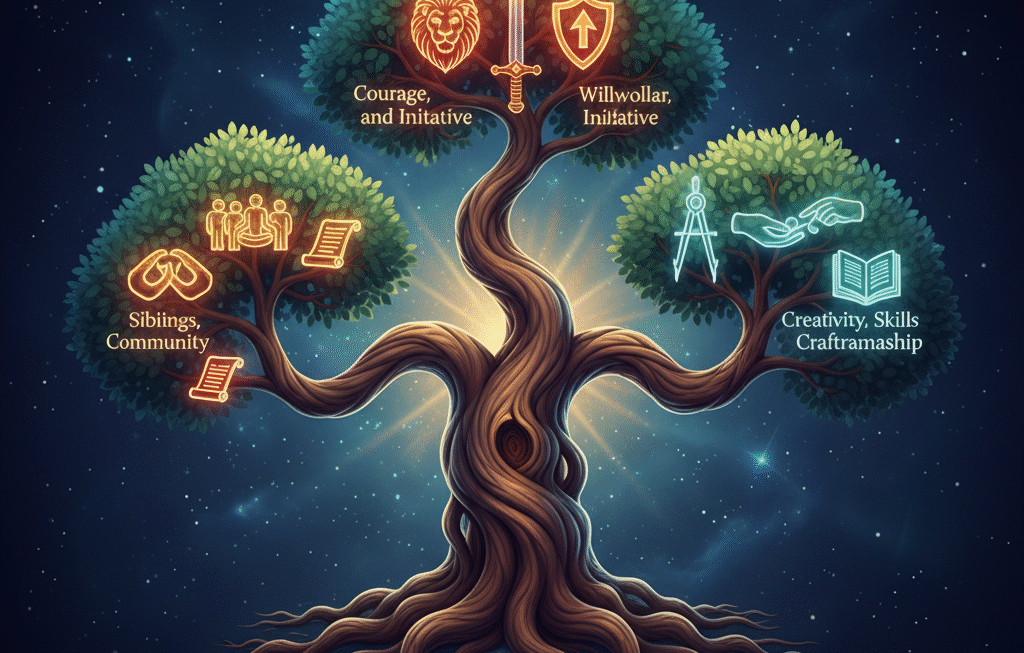What is the astrological signature of unwavering strength, consistency, and a planetary promise that truly delivers throughout life? While analyzing a Vedic astrology (Jyotish) chart, you might notice some planets seem exceptionally powerful or consistent in their effects, regardless of their basic dignity in the main birth chart (Rasi D1). Often, the secret behind this resilience and potency lies in a specific and highly significant condition known as Vargottama.
Understanding this concept is crucial for accurately assessing a planet’s true power and unlocking a deeper layer of predictive insight. This guide delves into the meaning and impact of Vargottama, explaining how these uniquely strong planets are identified and the powerful effects they bestow.
Astrological Yogas & Vargas: The Layers of Strength
Before we focus on Vargottama, let’s briefly contextualize it within the broader framework of Jyotish analysis. The Rasi chart (D1) provides the foundational blueprint, showing the basic placement of planets and the planetary yogas or combinations in astrology they form. However, the Divisional Charts (Vargas), particularly the Navamsa (D9), reveal the underlying quality, intrinsic strength, and karmic promise of these placements. Vargottama specifically highlights a unique synergy between the D1 and D9 charts.
What is Vargottama? The Signature of Double Strength
(Opinion): Vargottama is a special and highly auspicious condition in Vedic astrology where a planet occupies the exact same zodiacal sign in both the main Rasi birth chart (D1) and the Navamsa chart (D9). This signifies exceptional strength, stability, and the ability for the planet to consistently deliver powerful and clear results pertaining to its nature and lordship throughout the individual’s life. It’s often referred to as conferring double strength.
(Reason): Why is being in the same sign d1 d9 considered so powerful? The Rasi chart (D1) represents the physical manifestation, the “body” or the tree. The Navamsa chart (D9) represents the underlying quality, the dharma, the “soul” or the fruit of the tree. When a planet occupies the same sign in both, it indicates a perfect alignment between its external expression (D1) and its internal, karmic quality (D9).
There is no conflict or discrepancy between the promise and the reality. The planet’s energy is pure, undiluted, and manifests consistently and forcefully, akin to being in its own sign (Swakshetra) even if it isn’t. This coherence between the gross and subtle bodies grants the planet immense power and stability.
(Example): Imagine Mars in Leo in the Rasi chart (a friendly sign, giving courage and leadership potential). If Mars is also in Leo in the Navamsa chart, it becomes Vargottama. This Mars will now act with the strength and consistency almost equivalent to Mars being in its own sign (Aries or Scorpio).
The person’s courage, drive, and leadership qualities will be exceptionally prominent, unwavering, and a defining feature throughout their life. Even if a planet is in a neutral or enemy sign in the Rasi, achieving Vargottama status significantly boosts its capacity to give strong results.
(Opinion/Restatement): Therefore, Vargottama is a key indicator of exceptional planetary power and consistency. It signifies that a planet’s promise, as seen in the Rasi chart, is deeply rooted and will manifest reliably, embodying the concept of double strength and producing a significant vargottama effect.

Identifying Vargottama Planets: The Formation Rule
(Pattern Spotting): How do you identify vargottama planets in a birth chart? The method is straightforward but requires comparing the two charts accurately.
The Rule:
A planet is Vargottama if it occupies the exact same
in both the Rasi Chart (D1) AND the Navamsa Chart (D9).
Steps to Check:
- Note the Planet’s Sign in D1: Look at your main birth chart (Rasi D1) and note down the sign occupied by each planet (Sun, Moon, Mars, Mercury, Jupiter, Venus, Saturn, Rahu, Ketu).
- Generate the Navamsa Chart (D9): You will need astrology software or a reliable ephemeris to calculate the D9 chart based on the precise degree of each planet in the D1 chart.
- Note the Planet’s Sign in D9: Look at the generated Navamsa chart (D9) and note down the sign occupied by each corresponding planet.
- Compare: For each planet, compare its sign in D1 with its sign in D9.
- Identify Vargottama: If a planet is in the same sign d1 d9 (e.g., Mars in Leo in D1 AND Mars in Leo in D9), then that planet is Vargottama.
Important Note: Accuracy of birth time is crucial for calculating the Navamsa chart correctly. Even a small error can shift a planet’s Navamsa position, potentially creating or removing a Vargottama status incorrectly.
The Vargottama Effect: Interpreting the Results
(Value): What are the practical consequences of having vargottama planets in a chart? The vargottama effect is consistently positive, amplifying the planet’s strength and stability.
- Consistent and Powerful Results: A Vargottama planet delivers its natural significations (e.g., Venus for relationships/art, Jupiter for wisdom/wealth) and the results of the houses it rules with strength and consistency throughout life. Its influence is steady and reliable.
- Acts Like Own Sign (Swakshetra): Regardless of its actual sign placement in the Rasi chart (unless debilitated – see mythbusting), a Vargottama planet gains the strength and ability to act as if it were in its own sign. This is a significant enhancement.
- Auspiciousness: Vargottama status is inherently auspicious. It indicates a certain purity and strength in the planet’s energy, suggesting positive karmic potential related to its significations.
- Strong Dasha Results: The Mahadasha and Antardasha periods of a Vargottama planet are often particularly powerful and capable of delivering significant, defining results related to that planet’s nature and lordship.
- Modification of Yogas: Vargottama status significantly impacts the interpretation of Yogas.
- Amplifies Positive Yogas: If a planet forming a Raja Yoga or Dhana Yoga is Vargottama, the yoga becomes exceptionally strong and more likely to deliver its full promise.
- Mitigates Negative Yogas: If a planet involved in a challenging yoga (like an Arishta Yoga) is Vargottama, its inherent strength provides resilience and helps the individual overcome the difficulties indicated.
- Increased Significance: A Vargottama planet often becomes a key player in the chart, its themes playing a prominent and consistent role in the individual’s life story.
Essentially, Vargottama confers double strength, stability, and auspiciousness, making the planet a reliable source of strong results.
Mythbusting & Nuances: Refining Vargottama Analysis
(Engagement): While Vargottama is undeniably powerful, some nuances and common misconceptions need clarification for accurate yoga assessment.
- Vargottama Lagna (Ascendant): This is highly significant. If the Ascendant sign itself is the same in both the Rasi (D1) and Navamsa (D9) charts, the Lagna is Vargottama. This confers great strength to the personality, physical constitution, and overall resilience. The individual is often steadfast, possesses a strong sense of self, and is better equipped to handle life’s challenges. Their core identity is consistent on both physical and subtle levels.
- The Debilitated Vargottama Conundrum: What happens if a planet is debilitated (Neecha) in the Rasi chart and also Vargottama (meaning it’s in the same debilitation sign in the Navamsa)? This is a point of debate among astrologers.
- View 1 (Intensified Weakness): Some argue this makes the debilitation exceptionally severe, as the weakness permeates both the physical and subtle bodies. The challenges related to that planet become deeply ingrained.
- View 2 (Neecha Bhanga Potential): Many highly respected traditions argue that a debilitated Vargottama planet actually constitutes a powerful form of Neecha Bhanga Raja Yoga (cancellation of debilitation leading to great success). The logic is that Vargottama always gives the effect of being in its own sign. Since a planet cannot be simultaneously debilitated and in its own sign, the Vargottama status overrides and cancels the debilitation. This often signifies a person who faces intense initial struggles related to the debilitated planet but develops extraordinary strength and achieves significant success through overcoming those very challenges, often later in life. This view is generally more common and practically observed.
- Vargottama in Enemy Signs: If a planet is Vargottama while in an enemy’s sign in the Rasi chart, it still gains strength and consistency. However, the results might manifest with some inherent conflict or struggle associated with the inimical relationship. It’s strong, but perhaps less smoothly positive than Vargottama in an own, exaltation, or friendly sign.
- Rasi House Placement Still Matters: Vargottama confers great strength to the planet, but it does not erase the significance of its house placement in the Rasi chart. A Vargottama malefic planet placed in a challenging Dusthana house (6th, 8th, 12th) will still bring difficulties related to that house, but the planet itself has the inherent strength to potentially overcome or manage those difficulties more effectively than a non-Vargottama planet would. The results are mixed – a strong planet operating in a challenging arena.
Therefore, while identifying vargottama planets is a powerful shortcut to spotting key strengths, a nuanced interpretation considers the planet’s natural function (benefic/malefic), its Rasi house placement, and the specific sign involved.
Conclusion: The Seal of Consistency and Strength
Vargottama status is one of the most reliable and significant indicators of planetary strength and consistency in Vedic astrology. Identifying planets that occupy the same sign d1 d9 provides immediate insight into the core, unwavering strengths within a horoscope. The vargottama effect ensures that these planets will deliver their results – whether related to personality, career, relationships, or wealth – with power and reliability throughout the individual’s life, especially during their Dasha periods.
While the concept is simple to identify, its interpretation, particularly regarding debilitated planets, requires careful consideration. Nonetheless, Vargottama serves as a crucial seal of quality, confirming the depth and authenticity of a planet’s promise.
When undertaking yoga analysis or assessing overall chart potential, paying close attention to these exceptionally potent vargottama planets is key to unlocking a truly accurate and insightful astrological reading. They are the bedrock strengths upon which a successful and resilient life can often be built.












